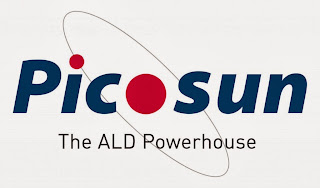Researchers from France (CNRS/Thales), UK (University of Cambridge) and South Korea (University of Suwon) report on integration of low-cost, conformal, and versatile ALD Al2O3 dielectric in Ni–Al2O3–Co magnetic tunnel junctions (MTJs). According to the publication (below) in ACS Nano the spin-filtering effect of graphene is enhanced and shows the potential of ALD for spintronics with conformal, layer-by-layer control of tunnel barriers in magnetic tunnel junctions toward low-cost fabrication and down-scaling of tunnel resistances.
The research unveil the potential of ALD tunnel barriers for spintronics and MJTs. They conlude that "ALD has a high potential and may open new avenues for the development of scaled-up spin circuits, such as MRAMs and envisioned all-spin logic architectures, offering closer integration with conventional processes of the microelectronics industry."
The full version of the article below is also made available here by Department of Engineering, University of Cambridge.
Sub-nanometer Atomic Layer Deposition for Spintronics in Magnetic Tunnel Junctions Based on Graphene Spin-Filtering Membranes
Marie-Blandine Martin †, Bruno Dlubak †‡,
Robert S. Weatherup ‡, Heejun Yang †§∥, Cyrile Deranlot †, Karim Bouzehouane †, Frédéric
Petroff †, Abdelmadjid Anane †, Stephan Hofmann ‡, John
Robertson ‡, Albert Fert †, and Pierre Seneor †*
† Unité Mixte de Physique CNRS/Thales, 91767 Palaiseau, France and University of Paris-Sud, 91405 Orsay, France
‡ Department of Engineering, University of Cambridge, Cambridge CB21PZ, United Kingdom
§ IBS Center for Integrated Nanostructure Physics (CINAP), Institute of Basic Science, Sungkyunkwan University, Suwon 440-746, South Korea
∥ Department of Energy Science, Sungkyunkwan University, Suwon 440-746, South Korea
ACS Nano, 2014, 8 (8), pp 7890–7895

We report on the successful integration of
low-cost, conformal, and versatile atomic layer deposited (ALD) dielectric in
Ni–Al2O3–Co magnetic tunnel junctions (MTJs) where the Ni is coated with a
spin-filtering graphene membrane. The ALD tunnel barriers, as thin as 0.6 nm,
are grown layer-by-layer in a simple, low-vacuum, ozone-based process, which
yields high-quality electron-transport barriers as revealed by tunneling
characterization. Even under these relaxed conditions, including air exposure
of the interfaces, a significant tunnel magnetoresistance is measured
highlighting the robustness of the process. The spin-filtering effect of
graphene is enhanced, leading to an almost fully inversed spin polarization for
the Ni electrode of −42%. This unlocks the potential of ALD for spintronics
with conformal, layer-by-layer control of tunnel barriers in magnetic tunnel
junctions toward low-cost fabrication and down-scaling of tunnel resistances.



%20(1).png)

